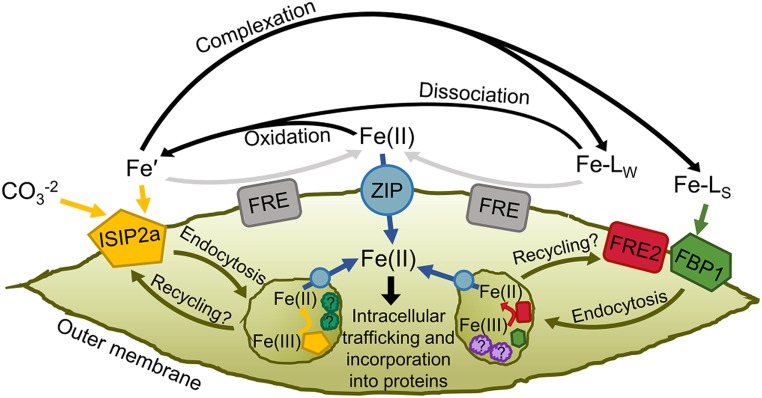Fig. 7.
Proposed model of iron uptake in P. tricornutum. Four main pools of soluble iron exist as substrates in marine environments: Fe′, Fe(II), iron bound to weak ligands (Fe-LW), and iron complexed by high-affinity chelators (Fe-LS). Fe′ is bound to ISIP2a at the cell surface with a carbonate companion anion. Clathrin-mediated endocytosis internalizes the iron–protein complex to vesicles where dissociation occurs, aided by reduction, and acidification facilitated by unknown proteins. Certain cell surface reductases transfer some Fe′ to the Fe(II) pool. Certain strong iron binding ligands are bound at the cell surface by the FBP1/FRE2 system and endocytosed to iron-processing vesicles. Weak ligands may be reduced at the cell surface, bolstering the Fe(II) pool, or may spontaneously dissociate into Fe′. Fe(II) is transported across the membrane by ZIP proteins, or abiotically reoxidized to Fe(III) which becomes substrate for ISIP2a. ZIP proteins also traffic reduced iron between subcellular compartments.

